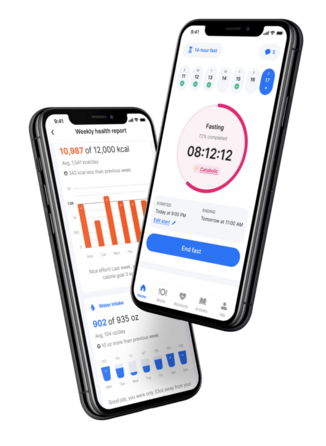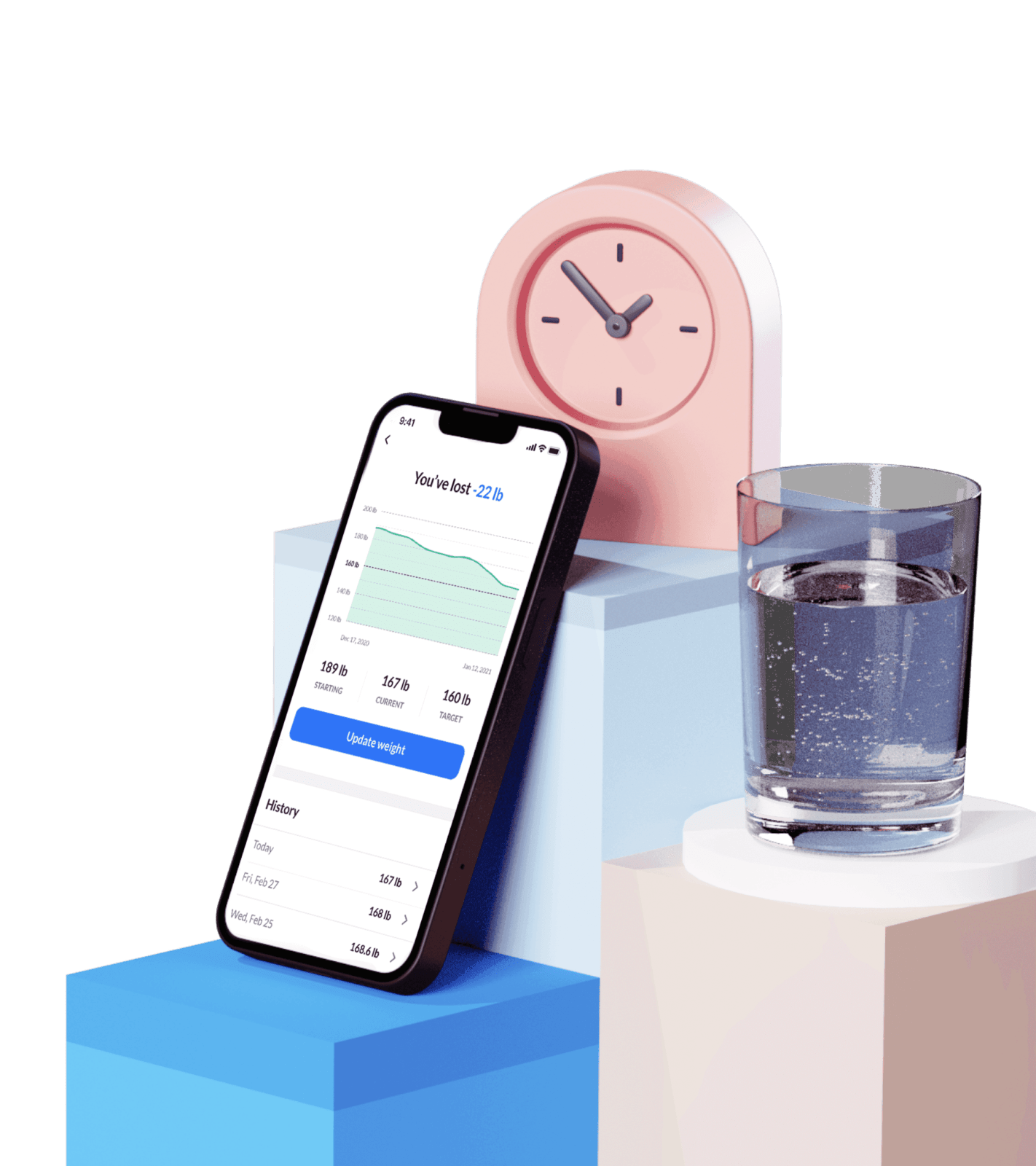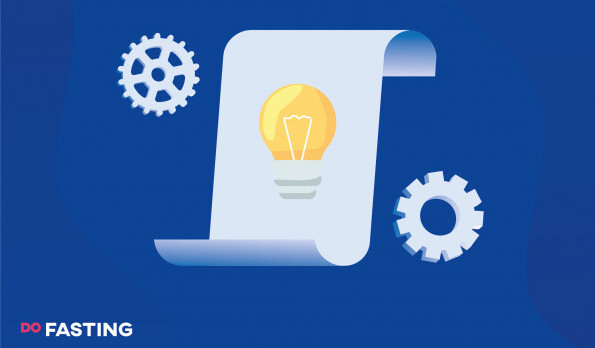Contents
What Is a Reverse Diet, and Why Is It Important?
A reverse diet is a program that gradually increases the calories you eat following a period of low-calorie dieting. This process can last for weeks or months, and it’s aimed at readapting your body to eating larger amounts of calories while preventing sudden weight gain.
Low-calorie diets aren’t a long-term weight loss solution, as they usually have very restrictive rules that are not sustainable in time. While following these extreme programs, your body experiences multiple metabolic changes due to caloric restriction, including:
- Decreased leptin levels — leptin is a hunger hormone. During a low-calorie diet, leptin levels can drop, resulting in decreased metabolism.
- Slowing metabolism — to preserve energy and adjust to the decreased calorie intake, your body may restrict its energy expenditure, making it more difficult to continue losing weight or lose fat.
- Increased cortisol levels — the stress hormone, or cortisol, can increase while on a diet, resulting in decreased metabolism.
- Increased insulin resistance — some kinds of dieting, like extreme low-calorie diets or starvation, can increase your insulin resistance, which can make it more challenging for your body to regulate blood sugar levels.
In short, strict diets stimulate the production of hunger-inducing hormones and slow metabolism. And while they may help you lose weight for as long as you follow their guidelines, you may find yourself regaining all the weight you just lost once you go back to a regular diet.
Bodybuilders, who must adhere to extreme calorie-restricted diets before competitions, devised a solution to balance their nutritional needs before and after tournaments—the reverse dieting method.
Reverse dieting is based on the process of adaptive thermogenesis or metabolic adaptation—a defensive mechanism that alters the body’s metabolism to enhance energy intake and reduce energy production. During metabolic adaptation, your body goes through several changes, like:
- Slowed digestion
- Hormone changes
- A decrease in resting metabolic rate (RMR), using less energy for “non-essential” functions
- A decrease in non-exercise activity thermogenesis (NEAT), the energy used for general activities
- A decrease in exercise activity thermogenesis (EAT), the energy we use to exercise
These changes allow the body to gradually adapt to higher-calorie diets, restore metabolic rates, and allow you to eat more food without sudden weight gain or adverse health consequences.
Reverse dieting proponents also claim that this process aids in developing a healthy relationship with food, eliminating the need for restrictive diets and fostering a more balanced and long-term approach to weight maintenance.
Take a
1-minute quiz
and discover how much weight you can lose with DoFasting!

How Does Reverse Dieting Work?
A successful reverse dieting journey requires multiple calculations and close monitoring of your food intake. We have summarized the process below.
Increase your calories gradually
Gradually increasing your calories on a reverse diet after being on a calorie deficit is essential for minimizing digestive discomfort, reducing stress on the body, maintaining metabolic flexibility, and avoiding rapid weight gain.
To get started, determine the calories you currently consume in a day and set a target caloric intake based on your body composition goals, activity level, and current weight. You may need the assistance of a specialized professional to calculate this accurately.
After that, you can start adding a few extra calories to your diet every day. Strictly monitoring the calories you consume daily is crucial, as this will allow your body to adapt to your new eating habit without stress or gastrointestinal issues.
How many calories to add in a day will depend on the strategy you choose: you can go slowly and follow a conservative approach, or try and go faster with a proactive strategy.
By pursuing a conservative strategy, you’ll be giving yourself more time to adapt by increasing the calories you eat by about 5% every week. Naturally, it will take longer to reach your food intake goal, but it is a safer choice in case you don’t want to take any risks.
On the other hand, a proactive approach will be more effective if you want to restore your energy levels and pursue an active lifestyle immediately. This strategy means increasing your calorie intake by up to 15% weekly.
Here’s an example of how increasing the calories you eat during reverse dieting could look:
- Starting week — 1,300 + 60 to 180 calories depending on your strategy, equaling 1,360-1,480 calories.
- Then, by adding the same number of calories each week for 10 weeks, you should be able to reach 2,000 daily calories in a bit over two months.
As stated before, strictly monitoring your calories during this process is essential to avoid sudden weight gain. If you notice that you’re regaining weight during this step, check your portion sizes aren’t interfering with your calorie intake.
We must note that reverse dieting may not be appropriate for everyone. If you experience adverse side effects or begin to gain weight, visit a medical professional or a licensed dietician.
Increase your macros gradually
Slowly increasing your intake of macronutrients like carbohydrates, proteins, and fat is essential for a few key reasons:
- To avoid nutrient imbalances
- To prevent gaining weight suddenly
- To help with metabolic adaptation
- To promote sustainable weight loss
- To minimize gastrointestinal discomfort
While reverse dieting, you must identify the proper carb-to-fat ratio for your needs. This should be decided based on your goals and how quickly you want to increase the number of calories you can consume.
First, find out how many calories you usually eat in a day. Next, aim to eat 1 gram of protein for each pound you weigh. After that, subtract the calories from protein in your diet from your total daily calorie goal to see how many calories are left over.
Split the leftover calories between carbohydrates and fat, using either a 40/60 or 60/40 ratio. You can change these percentages based on how your body reacts. If you notice fast weight gain, check your percentages and make sure you’re not eating too many calories each week.
Track your progress
Tracking your progress allows you to observe your improvements and ensure you’re on the right track to your goals. It can also help you become more conscious of your eating habits and patterns and help you stick to your diet.
Here are some progress-tracking methods you can use:
- Weighing yourself multiple times a week
- Keeping a food diary
- Taking body measurements
- Keeping track of your biomarkers (blood glucose levels, blood pressure, cholesterol levels)
If you wish to weigh yourself to measure your progress, pick 2-3 days each week and weigh yourself before breakfast. Research shows that weighing yourself every day might help you lose weight more successfully, but be careful not to obsess over the numbers: weight fluctuates because of different reasons, not always related to the calories we consume.
If you’d rather stay away from the scale and use other metrics to keep track of your progress, you can use a calorie tracker or a food diary—both included in the DoFasting app.
Take a
1-minute quiz
and discover how much weight you can lose with DoFasting!

More Guidelines To Support Your Reverse Dieting Efforts
We have just gone over the basics of reverse dieting. Nonetheless, there are some additional recommendations that might support your efforts and help you maintain your weight:
- Limit sugary foods and beverages — they are high in calories and will spike your blood sugar levels.
- Eat more nutrient-dense foods — these will provide your body with vitamins and minerals.
- Get adequate rest — getting 7-9 hours of sleep every night can help regulate your hunger and energy levels.
- Limit processed and high-calorie foods — they will spike your blood sugar levels and hinder your progress.
- Incorporate strength training — a workout routine will help you build muscle mass and support your metabolism.
- Listen to your body and track your hunger levels — if you’re experiencing side effects, adjust your diet.
- Manage your stress levels — find positive coping mechanisms to help you stick to your diet.
Who Should Consider Reverse Dieting?
Groups of people that would find reverse dieting useful include:
- People who have recently lost weight — if you’ve recently achieved your fat loss goals, the reverse diet can help you maintain these results long-term.
- Dieters who experience weight loss plateaus — reverse dieting can help reset the metabolism and prevent the body from adapting to the reduced calorie intake, which causes weight loss plateau.
- Athletes and fitness enthusiasts — the reverse diet can help them boost their energy levels and prepare their bodies for physical activities. It can also mitigate the harmful effects of calorie restriction and reduce fat gain.
Consider These Risks and Drawbacks of Reverse Dieting
While reverse dieting has mostly positive effects on the body, you should also be aware of its potential drawbacks:
- Digestion problems — changing the number of calories you consume can lead to some digestive issues.
- Focuses on calorie counting — even though weight loss is a complex process involving hunger, nutrients, sleep, stress, hormones, and appetite, reverse dieting focuses primarily on calories, leaving out a lot of relevant factors.
- Lacks research — this diet has no straightforward research supporting its effectiveness.
- Time-consuming — this process requires detailed tracking of your daily calorie intake, which can be time-consuming.
The main point to remember is that the reverse diet doesn’t have enough scientific research to be considered an effective weight management method to reduce the likelihood of weight regain.
Reverse Dieting Tips and Tricks
If you’ve decided to test this approach, here are some pointers to help you make the most of your experience.
Combine with intermittent fasting
Intermittent fasting is a time-restricted eating pattern scientifically proven to promote weight loss and good health. When introduced into your habits, fasting can bring a considerable number of benefits, including:
- Support with calorie restriction — as you eat less during fasting, you naturally reduce the number of calories you consume in a day, which can be helpful while on the reverse diet.
- Better insulin sensitivity — which can help you control cravings and improve your overall health in the long run.
- Increase metabolic rate — balancing out the effects of reverse dieting.
You can track your fasts and calorie consumption with the DoFasting app—a fasting tracker specifically developed to keep you motivated and informed of your progress.
Incorporate as many nutrient-dense foods as possible
When increasing your caloric intake, make sure to prioritize nutrient-dense meals packed with vitamins, minerals, and other nutrients like:
- Fruits and vegetables
- Lean proteins
- Whole grains
Meals loaded with essential nutrients make you feel satisfied for more extended periods of time, which helps prevent overeating and weight gain. They can also help the body recover and adapt to the increased calorie intake, reducing the risk of nutrient deficiencies and other health problems.
Practice mindful eating to control your hunger pangs
Mindful eating is the practice of paying attention to your eating experience to build a healthy relationship with food. People who practice mindful eating learn to listen to their hunger signals, eat slowly, and become more attentive to feelings of fullness.
While on a reverse diet, incorporating mindful eating can help minimize hunger pangs—you will be increasing your caloric intake during this process, so paying attention to what you slow down while you eat and understand when it’s time to stop.
Avoid restrictive dieting methods
Reverse dieting is often used as a healthy way out of restrictive eating programs where calories have been cut off for a while.
Restrictive diets can exclude entire food groups or drastically reduce calorie intake, which can, in turn, disrupt your metabolism, cause nutrient deficiencies, and lead to binge eating or unhealthy relationships with food.
A reverse diet, on the other hand, emphasizes gradually increasing your calorie intake in a sustainable, mindful, and non-restrictive manner.
By leaving strict dieting methods behind and focusing on progressively increasing your calorie intake, you will slow your metabolism while developing a healthier relationship with food.
Stay consistent, but listen to your body
Staying consistent is essential for your body to adapt to this new eating habit. Consistency also helps maintain a positive relationship with food and promotes a gradual body adaptation.
Paying attention to your body and how it responds to the increased calorie intake will help you identify your patterns, how fast you reach the feeling of fullness after a meal, and any necessary changes based on your overall feelings.
Take a
1-minute quiz
and discover how much weight you can lose with DoFasting!

Reverse Dieting: Key Takeaways
Reverse dieting is the process of gradually increasing your calorie intake following a low-calorie diet to prevent rapid weight gain.
This eating strategy may assist you in maintaining your ideal weight and help you develop a healthy relationship with food. However, it is a complicated process that may not fit everyone.
Before you start reverse dieting, speak with a registered dietitian so they can help you figure out the best course of action for your specific needs.
See how DoFasting will improve your life
Find out what works for you with this 60-sec quiz approved by our experts and get your personal revolutionary fasting assistant.
Start the Quiz
This is an evidence-based article that includes scientific citations. DoFasting’s professional writers and editors prepared the content, which a team of medical experts verified to be accurate.














